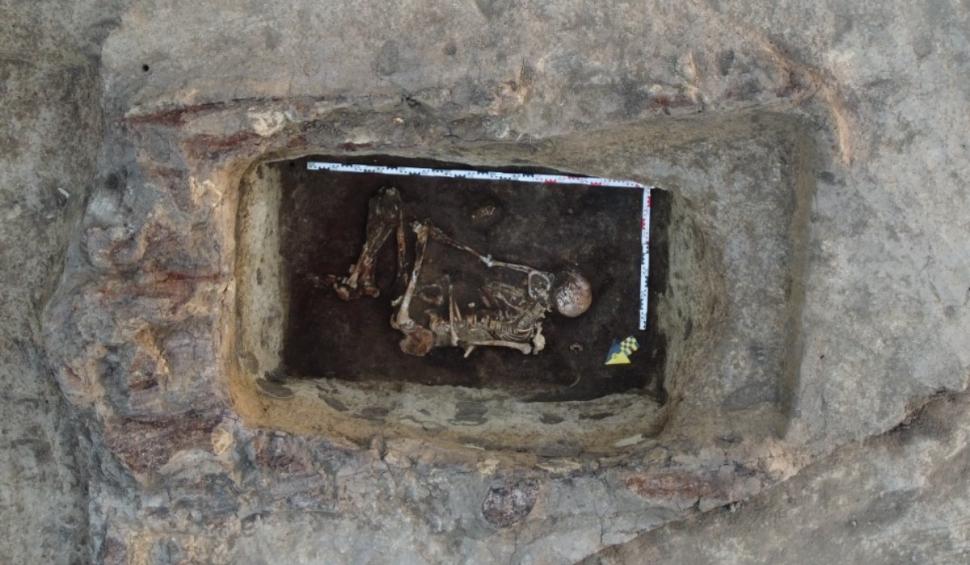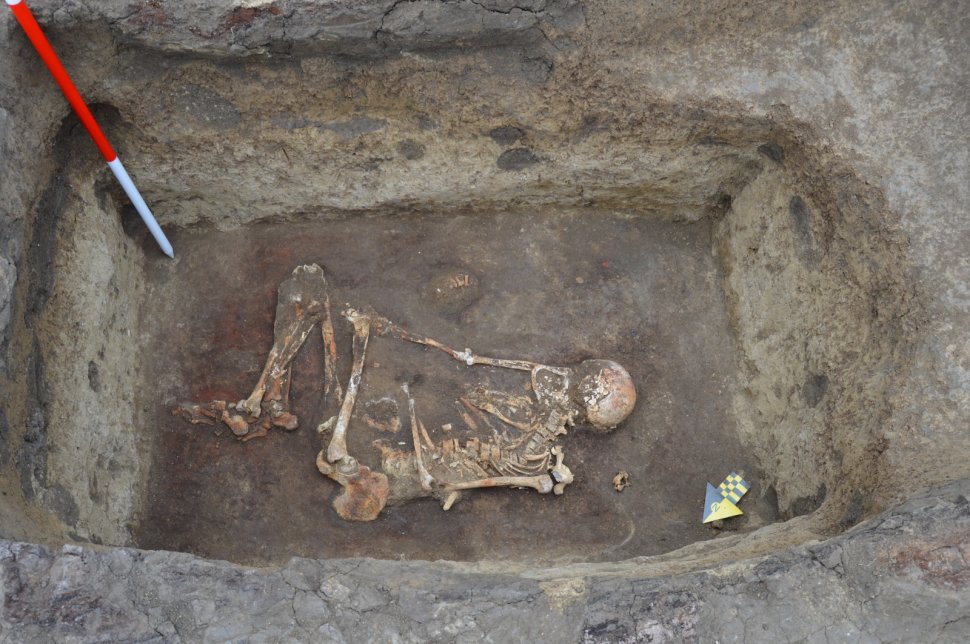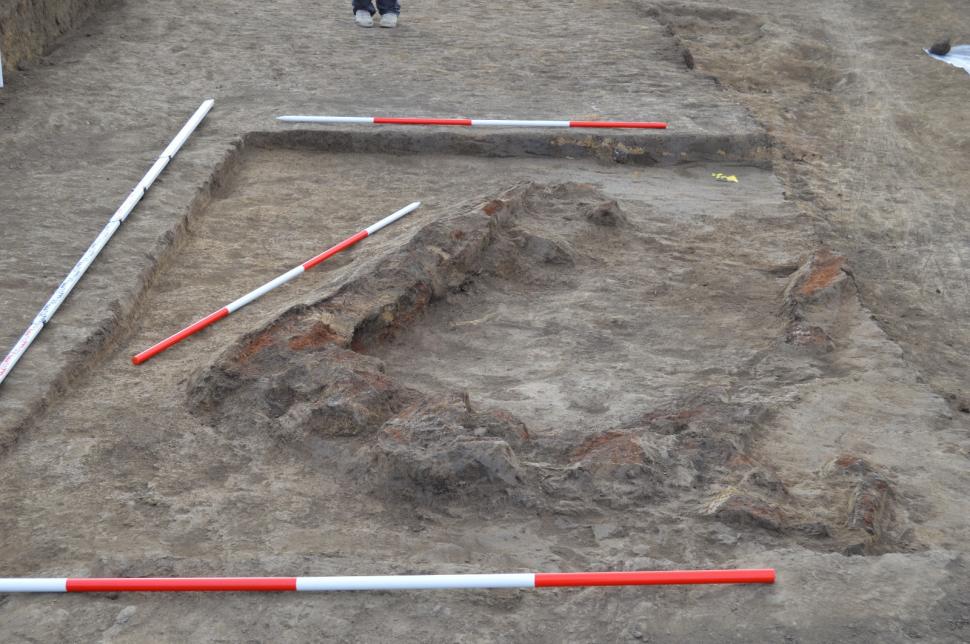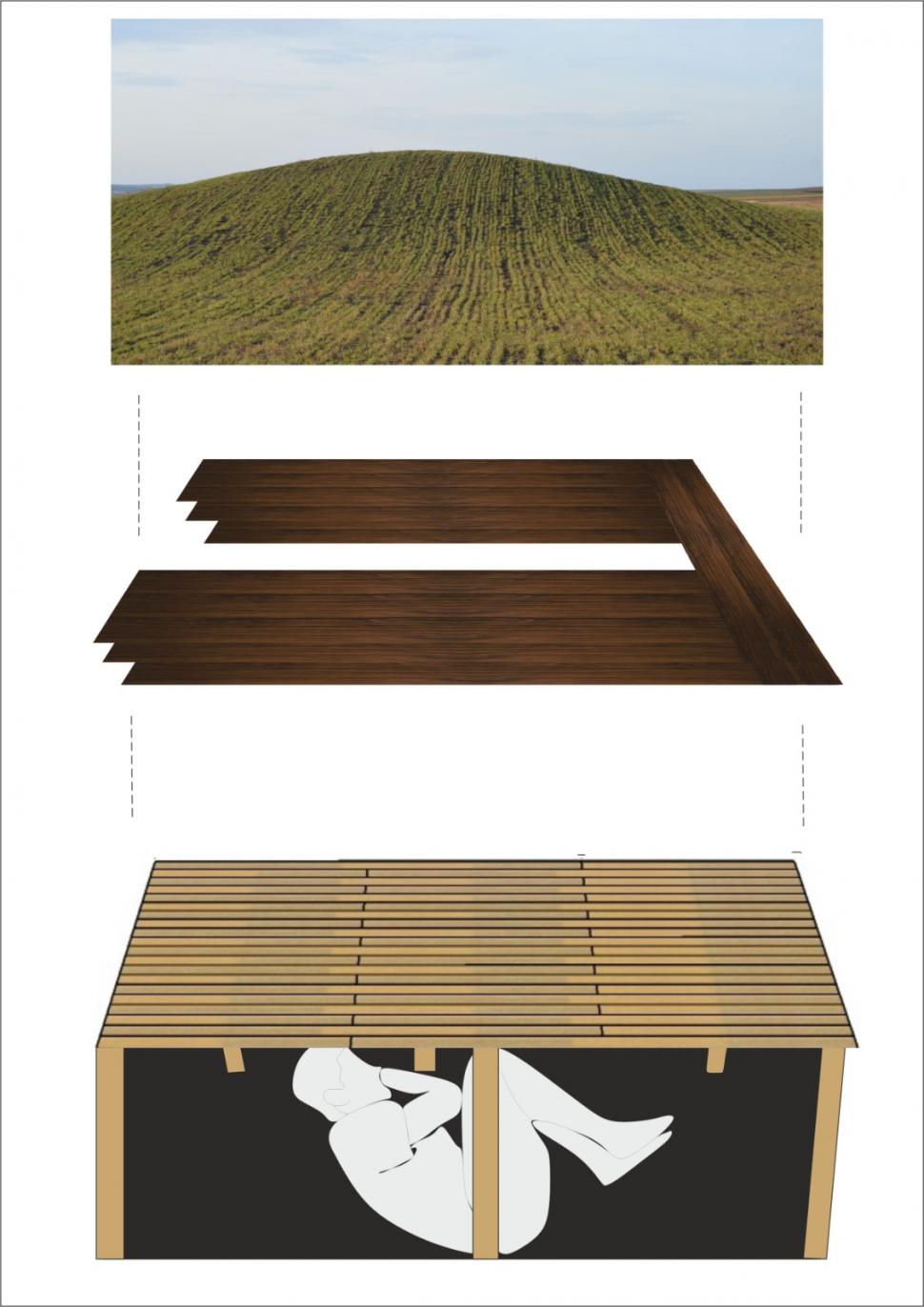 An over 3,000-year-old human skeleton has been found following archaeological excavations in Botoșani County, Romania. It was transferred to Iasi to be analyzed by specialists. A team consisting of archaeologists from the Botoşani County Museum, in collaboration with archaeologists and anthropologists from the Institute of Archeology in Iasi, as well as archaeologists from the University of Opava and the Silesian Museum in the Czech Republic, carried out the archaeological excavations.
An over 3,000-year-old human skeleton has been found following archaeological excavations in Botoșani County, Romania. It was transferred to Iasi to be analyzed by specialists. A team consisting of archaeologists from the Botoşani County Museum, in collaboration with archaeologists and anthropologists from the Institute of Archeology in Iasi, as well as archaeologists from the University of Opava and the Silesian Museum in the Czech Republic, carried out the archaeological excavations.
” Starting in 2018, we carried out surface searches in the area and during a field visit, together with colleagues from the Iasi Institute of Archeology, we identified the traces of two mounds, two large funerary monuments, rather leveled due to the agriculture and which we recently decided to study, since they deteriorate more and more every year.
 I have followed the recovery of scientific information, for the most part, as well as the documentation of the traces left, identifying only one skeleton so far.
I have followed the recovery of scientific information, for the most part, as well as the documentation of the traces left, identifying only one skeleton so far.
The skeleton belongs to the early Bronze Age, respectively Yamnaya culture , which is rather little known in the territory of Botoşani county ,” said the head of the archaeological section of the Botoşani County Museum , Adela Kovacs.
He also added that the skeleton refers to “funeral rituals practiced at the time.”
“The skeleton retains traces of red ocher , a substance that was placed on the deceased, in the area of the head and in the area of the feet, to underline a rite linked to rebirth, to blood, to the other world.
The position of the body is stooped. Initially, it was placed on the back, with the knees drawn to the chest, suggesting the fetal position. This position of the child represents the surrender of the earth for a future birth ,” explained Ana Kovacs , according to Agerpres.
 The Yamnaya are the mysterious people, the ancestors of today’s Europeans, according to a theory that has returned to the attention of specialists and the general public, supported by more and more historians, bioanthropologists and geneticists, in the light of new research done with cutting-edge technology cutting edge.
The Yamnaya are the mysterious people, the ancestors of today’s Europeans, according to a theory that has returned to the attention of specialists and the general public, supported by more and more historians, bioanthropologists and geneticists, in the light of new research done with cutting-edge technology cutting edge.
 It is a surprise of great proportions, a theory that is not mentioned in any history book – that Europeans are descended from a warlike people – the Yamnaya – who , over five thousand years ago, came from the north of the Black Sea and conquered Europa. The analysis of the human genome, with today’s technical and scientific means, has shown that almost 40% of our genes are inherited from these warriors.
It is a surprise of great proportions, a theory that is not mentioned in any history book – that Europeans are descended from a warlike people – the Yamnaya – who , over five thousand years ago, came from the north of the Black Sea and conquered Europa. The analysis of the human genome, with today’s technical and scientific means, has shown that almost 40% of our genes are inherited from these warriors.









